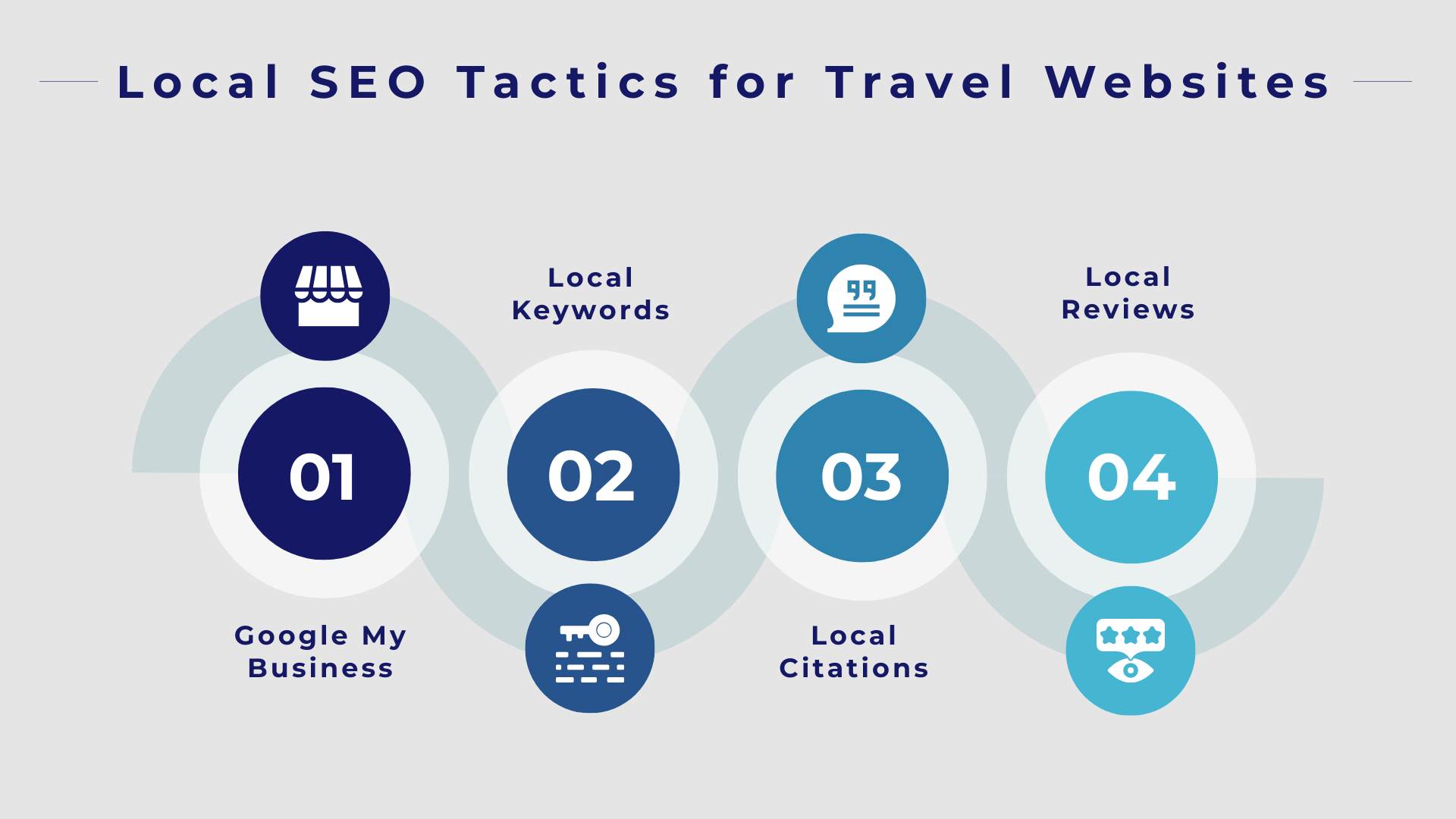SEO for Travel Websites: Top 15 Strategies to Boost Organic Traffic and Increase Bookings
Introduction: Why SEO is Essential for the Modern Travel Business
When it comes to planning the next journey, millions of tourists today type their queries into search engines. But how do you embrace this change or make sure that your travel website is unique to the other many out there? In essence, what if your site could be ranked strategically and acquire more unique visitors organically? This is exactly what digital marketing for travel agencies does.
Travel is one of the most popular industries on the Internet, and the overpopulation of millions of travel websites makes it one of the most saturated. However, if the hospitality industry creates travel services without advanced SEO for travel websites, they can remain completely unnoticed by buyers.
This blog reveals 15 advanced SEO strategies that can help travel websites improve their search rankings, increase organic traffic, and ultimately drive more bookings. From foundational tactics like keyword research to technical optimizations like schema markup, these techniques will elevate your SEO game.
This guide is aimed at travel agency owners, digital marketers, SEO specialists, content creators, travel bloggers, and anyone in the travel industry looking to boost their SEO and outshine competitors.
What is SEO, and why is it essential for travel websites?
Search Engine Optimization, or SEO, is the skilled process of arranging and adjusting elements in your travel site to improve its presence on search engines such as Google, Bing, and others. When your website is on top, it will be frequently accessed by people who are interested in seeking travel facilities such as flights, accommodation, or a certain place.
The importance of SEO for travel websites can be realized from the fact that it helps bring more people to your site, which in turn helps with more bookings. When you are in the travel niche, where competition can be cutthroat, it is always essential to ensure you target the right audience, get the right traffic, and, therefore, grow your sales and business.
Start with a Comprehensive SEO Audit: Analyze Your Website’s Health
Why is an SEO Audit Essential for Your Travel Website’s Success?
Understanding Your Site’s Performance:An SEO audit for travel websites is a diagnostic examination of your website. It shows issues that may be causing a decline in ranking position, such as slow page speed, Gopher links, or missing meta tags.
Key Areas to Focus On:

Technical SEO: Focus on crawling issues, mobile-friendliness, speed of the site loading, HTTPS security, and structured data implementation.
Content Audit: Assess keyword usage, content quality, and internal linking.
Backlink Profile: Analyze the quantity and quality of external links pointing to your site.
User Experience (UX): Ensure easy navigation, clear calls to action, and engaging design.
Tools for Audit:
Google Search Console for crawl errors and indexing issues.
SEMrush, Ahrefs, and Screaming Frog for in-depth technical analysis.
Outcome: A clear understanding of your site’s weaknesses, allowing you to fix critical issues and lay the groundwork for future SEO success.
Targeted Keyword Research: Understand What Your Audience Is Searching For
The Foundation of Successful SEO Strategy for Travel Websites
What is Keyword Research?: Travel keyword research is the identification of the words that people use to search for travel information on the web. As a result, you are ready to produce what your audience is searching for with the right keywords they use to search and rank high.
Types of Keywords:
Head Keywords: Broad, high-volume keywords (e.g., “best travel destinations”).
Long-tail Keywords: More specific and lower competition (e.g., “best family vacations in Europe under $3000”).
Local Keywords: Focus on geolocation-based searches (e.g., “things to do in Rome this summer”).
Keyword Research Tools:
Google Keyword Planner for basic keyword data.
SEMrush, Ahrefs, and Ubersuggest for in-depth keyword analysis.
Google Trends to see seasonal fluctuations and search interest.
Outcome: A solid list of target keywords that will help your content rank better and attract highly relevant traffic to your website.
Optimize On-Page SEO: Craft Pages That Rank and Engage
The Power of On-Page SEO Services for Travel Websites
On-Page SEO Defined: On-page SEO involves tweaking the technical parameters of the page, including meta tags, title, meta description, focus keywords, and other parameters, to improve its ranking position in search engine results.
Key On-Page Elements to Optimize:

Title Tags: Make your title tags compelling and include target keywords.
Meta Descriptions: Craft engaging descriptions that summarize the page’s content and include a call-to-action (CTA).
Headings (H1, H2, etc.): Structure your content logically with relevant keywords in the headings.
URL Structure: Use clean and descriptive URLs that include relevant keywords (e.g., /best-vacation-places-in-2024).
Internal Linking: Link to other pages within your website to keep users engaged and improve your site’s overall SEO.
Image Alt Text: Use descriptive text for all images to improve visibility in Google Image Search and enhance accessibility.
Outcome: On-page SEO optimization improves both search rankings and user experience, leading to higher engagement and more bookings.
Improve User Experience (UX): Keep Visitors Engaged and Happy
Why is user experience a Critical SEO Factor?
Google’s Focus on User Signals: To Google, user experience is significant, and websites with this quality are encouraged. Other attributes, such as bounce rate and time on site, as well as page load time, also matter with ranking.
UX Best Practices for Travel Websites:
Responsive Design: Ensure your website works perfectly across all devices, especially mobile, as many travelers browse on smartphones.
Site Speed: Aim for page load times under 3 seconds. Slow websites lead to high bounce rates and hurt rankings.
Clear Navigation: Make it easy for users to find information and book trips with intuitive navigation and well-organized content.
Engaging Visuals: Use high-quality, relevant images that highlight the travel experiences you offer.
Tools to Test UX:
Google PageSpeed Insights to measure page load speed.
Hotjar for heatmaps to understand user behavior on your site.
Google Mobile-Friendly Test to ensure your website is optimized for mobile users.
Outcome: A user-friendly website encourages visitors to explore more, leading to increased engagement and bookings.
Leverage Local SEO: Target Travelers in Specific Locations
Why Local SEO is Essential for Travel Websites?
Local Search Trends: Given that people often look for particular places, points of interest, or services, local SEO remains important for travel-related websites.
Local SEO Tactics:

Google My Business: Create and optimize your profile to appear in local searches and Google Maps.
Local Keywords: Use location-specific keywords (e.g., “best hotels in London” or “things to do in Paris”).
Local Citations: Ensure your business is listed in local directories like Yelp, TripAdvisor, and local tourism boards.
Encourage Local Reviews: Positive reviews on platforms like Google and TripAdvisor boost credibility and rankings
Outcome: Optimizing for local SEO increases your website’s visibility in location-specific searches, attracting tourists who are ready to book.
Create High-Quality, Informative Content: Be the Go-To Resource for Travelers
Why is content king in SEO strategy for travel websites?
Content that Answers Questions: Such websites can do very well if they publish useful, detailed information that the traveler is looking for. High quality and high levels of information can establish trust between users, search engines, and the site itself.
Types of Content to Create:
Destination Guides: Offer in-depth, well-researched guides on popular destinations.
Itinerary Suggestions: Create sample itineraries for different types of travelers (e.g., solo, families, couples).
Travel Tips: Provide valuable advice on budgeting, packing, or how to avoid common travel mistakes.
Customer Testimonials & Case Studies: Feature real-life stories and experiences from past travelers to build trust.
Content Optimization: Make sure that each piece of content is keyworded correctly, uses simple language, and contains links to your website’s pages. For, businesses need to adopt accurate and trusted travel content marketing strategies.
Outcome: Content that educates and engages users not only improves SEO rankings but also increases conversions by positioning your website as an authority in the travel space.
Build High-Quality Backlinks: Boost Your Site’s Authority
Why Backlinks are Critical for SEO Success?
The Power of Backlinks: Backlinks (links from other websites pointing to your site) are one of the most important ranking factors. High-quality backlinks from reputable sites increase your domain authority and help improve your rankings.
How to Earn Backlinks:
Guest Blogging: Write for reputable travel blogs and include links back to your website.
Influencer Partnerships: Work with travel influencers to get mentions and backlinks.
Linkable Assets: Create valuable content like detailed guides, tools, or infographics that others want to link to.
Tools to Track Backlinks:
- Ahrefs and SEMrush for monitoring backlinks and competitor analysis.
Outcome: Quality backlinks improve your website’s authority and help you rank higher on search engines, driving more organic traffic.
Optimize for Featured Snippets: Capture Position Zero
What Are Featured Snippets and Why They Matter
Featured Snippets Explained: Featured snippets are the boxed information at the top of Google search results that provide quick answers to users’ queries. Ranking in this position can drive significant traffic.
How to Optimize for Featured Snippets:
Answer common questions directly in your content.
Format your content in bullet points, numbered lists, or Q&A sections.
Use schema markup to help Google understand the structure of your content.
Outcome: Ranking in a featured snippet drives more traffic and visibility, making your travel website stand out.
Use Video Content: Engage Visitors and Boost Rankings
The Power of Video for Travel SEO Services
Why Video is Important: Videos are more engaging and can increase the time users spend on your site, which is a ranking factor for Google.
Types of Video Content:
Destination Tours: Showcase destinations with immersive video tours.
Travel Tips: Create short videos offering advice and insights for travelers.
Customer Reviews: Post video testimonials from satisfied customers.
Video Optimization:
Use keywords in titles, descriptions, and tags.
Add captions and transcripts to improve accessibility.
Embed videos on relevant pages to enhance content.
Outcome: Video content improves engagement, boosts rankings, and increases conversions by offering visitors a richer experience.
Optimize for Mobile: Ensure a Seamless Experience for Mobile Users
Why Mobile Optimization is Crucial for Travel Websites
Mobile Usage Trends: With an increasing number of travelers booking trips on mobile devices, Google has made mobile-first indexing a priority. This means that Google primarily uses the mobile version of a website for ranking.
Mobile Optimization Best Practices:

Responsive Design: Ensure your website adapts to any screen size, whether it’s a phone, tablet, or desktop.
Fast Loading Speed: Mobile users often have less patience for slow sites. Aim for under 3 seconds load time.
Simplified Navigation: Make it easy to navigate with finger-friendly buttons and streamlined menus.
Touch-Friendly Features: Ensure forms, buttons, and other interactive elements are easy to click on mobile.
Outcome: Mobile-friendly web design makes websites easy to use for travelers with mobile devices and increases their popularity among search engines.
Source: https://www.sigmasolve.com/blog/seo-for-travel-website/
